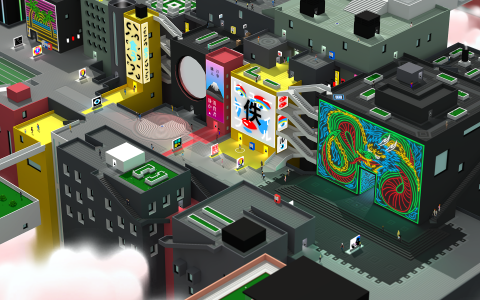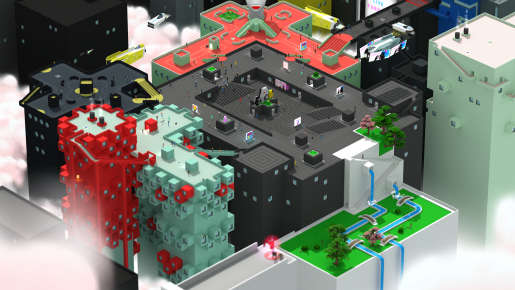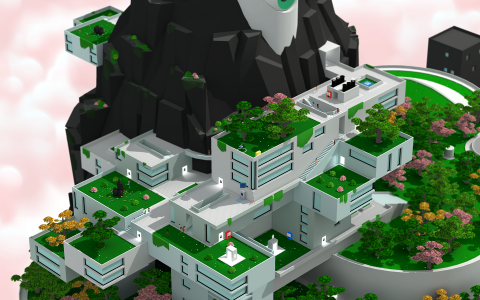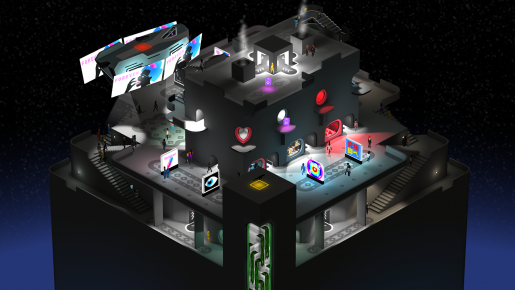Tokyo 42 is a brand new isometric open-world shooter from SMAC and Mode 7. Both the developer and publisher side of things have taken place in the UK for this Japanese themed title. With a hand crafted game world, a plethora of weapons at your disposal and a unique camera perspective, Tokyo 42 has a lot going for it. However, will players want to actually play the game or just stare at it’s stunning artwork? Let’s find out!
Players start the game by being thrust into the storyline head first. The main character is being hunted by the Tokyo police for murder. It seems that you are being framed for murder but by who and for what purpose? From here players are plunged into a world where the criminal underworld is relatively close to the surface and assassins aren’t overly scared of running around. While the character is being framed for murder, players will soon realise in the year of 2042 it wouldn’t be overly hard for anyone to commit such a crime.
There is a huge arsenal of weapons for players to get their hands on. Surprisingly, for someone shocked by being framed for murder, the main character is pretty good at the whole concept of killing and escaping. Players can work their way up to having some great guns and weapons but my personal favourites must be the sniper rifle and the Katana. There is something rather satisfying about both weapons. Shots from sniper rifles can be from decent range across buildings, taking a target out without wading through enemy bodyguards or gang members. The katana is the opposite and offers a more up close and personal way to dispatch people. It is also silent allowing you to go full Kill Bill style on enemies while stealthing.
Exlosives are also thoroughly entertaining to use but are often not the best item to use. This is due to the number of civilian non-player characters (NPCs) wandering around the world. There certainly is some level of crowd simulation when it comes to these NPCs reacting to gunshots and explosions. More responsive are the many enemies, dotted across the game world, ready to not only kill you but leave your corpse riddled with hundreds of bullet holes. Rushing the player, flanking the player, exploding the player, nothing seems too much once you’re discovered. You’ll often see the death screen popping up, thankfully there are a decent amount of save points!
Alongside the number of save points players will get to complete a lot of missions. The majority have a quickness vibe to them. A vibe that runs through the game. Missions might not be long but some provide decent difficulty, with multiple enemies coming at you at once. Quick and fast firefights match the rest of the speedy gameplay, offering short bursts of exhilaration. This gameplay style lends itself to a game that players may not sit down to play for hours. However, players can easily fall into the trap of “just one more level”. These short speedy bursts also enable players to pick up and play the game for a short period of time, making progress in the game a step at a time.
During the fast firefights players will need to master the perspectives of Tokyo 42. Being able to track where the bullets fired towards you are going, with the 45-degree snap camera, is key to survival. This offers a unique aspect to the game aside from being the way you enjoy the phenomenal visual experience. Rotating by 45-degrees is your window to this stunning world. Though at times, like when you are taking in the beautiful city of Tokyo and rotate the camera to discover a gang of nudists in a garden, you’ll wish some secrets of Tokyo 42 were left unfound.
From its design, players will definitely be drawn in and want to see the handcrafted city from every angle possible. The art style and setting is reminiscent of the futuristic world depicted in Ghost In The Shell. Its less curvy, more sharp lines, with Tokyo 42 utilizing distinct colours to pop certain buildings from the background of grey. This being said with the low gravity aspect of jumping in the game you can feel a bit like Major from Ghost In The Shell when she makes here leaps of faith.
The low gravity of Tokyo 42 helps to make navigating around the game world that bit easier. On top of this, it also allows for more fluid movement from one platform to another. Gravity makes real world parkour hard for the average person but jumping down multiple stories in Tokyo 42 is more like falling in style. Opening up the ability for players to traverse the game world with less fear. Come to the end of a walkway with a staircase wrapping backwards to get to a lower level that is in front? Just keep travelling forward and simply jump the ledge. This cuts the time players will take walking between objectives getting them to the next point of action faster.
Naturally, this gung-ho approach won’t suit all situations. Jumping over a barricade instead of crouching behind it is a sure-fire way to getting splatted by a barrage of bullets in enemy territory. Despite being an open world, sections have clearly been developed with a lot of attention to detail for specific situations. Locations where shootouts will occur will include a variety of cover including pillars, posts and walls duck and cover behind. Don’t think that this makes the game any easier though as it’s not just you that will benefit from the placement of cover.
Between the mixture of careful level design and the NPC awareness mechanics, individual areas offer gamers multiple gameplay opportunities. There are a number of times in Tokyo 42 where the game kind of railroads the player, giving mission that requires stealth for instance. At other points this is opened up to the player. There might be an obvious way to complete an area but the same section could be completed different ways. Though one way, typically stealth, may be the harder option based on the environment.
In my first hour of playing Tokyo 42 I found the general controls, including changing the camera angles, a bit fiddly. Thankfully, though the controls are not instantly intuitive as players go deeper into the game it gets easier. My biggest issue is that movement seems easiest with a controller and aiming is easier with a mouse. The limitation of having only two hands strikes again. The controls are by no means bad and I cannot think of a more intuitive control scheme, so this shouldn’t be held against Tokyo 42 too much.
Unfortunately, there is a downside to playing pre-release and that is the lack of players online. To date I haven’t been able to try out the rather unique sounding multiplayer content. The concept however is rather in keeping with the game and for this reason alone, I look forward to playing it. This intriguing mode sees players attempt to blend in with the general public, the game world’s NPCs, while collecting weapons. During this time, players must determine and kill their opponents. It doesn’t sound like it’ll hold players’ attention for long gaming sessions but it fits with the game where short bursts of entertainment are there to be enjoyed.
Tokyo 42 is described by the developers as “hyper-stylish” and that is spot on explanation of the art style. This is the debut game for the London based brothers, Sean Wright and Maciek Strychalsk, that make up SMAC but that certainly doesn’t show. Moving past the visuals is hard as they are, via the set camera angles, drilled into the mechanics of the game. The visual experience is even awesome enough that just running, parkouring, around virtual futuristic Tokyo is enjoyable. The range of weapons ready for the player spices things up nicely and I can see many players coming back after completing the game to try sections in a different way. If you are prepared to die a lot while working out the best routes to take, which cover to move into and which enemy to slay first Tokyo 42 is for you.
[Editor’s Note: Tokyo 42 was reviewed on Windows PC. The game was provided to us by the developer for review purposes.]




